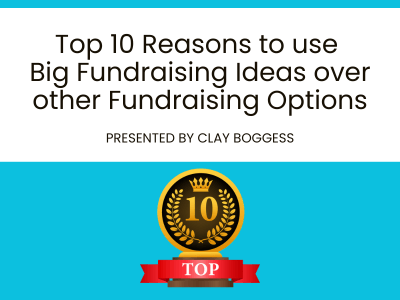
Understand how your prize program works.
There are two things to consider if you want to know how fundraising incentive programs work and how students are rewarded for selling. One is the basis used to reward sellers. Students can win prizes based on the dollar amount or number of items sold.
The second consideration is how prizes are won. Students can either accumulate prizes for selling additional items or move up to higher prize levels and win a bigger and better prize as the number of items sold increases. This is commonly referred to as a noncumulative or pick-a-prize program. Let's look at this more closely.
Dollar Amount Raised
When students are rewarded for the total amount of money turned in, the advantage goes to those who can sell more of the higher-priced brochure items. A prize brochure that uses this format may work something like this:
- Sell $100 worth of merchandise and win prize level A.
- Sell $250 worth of merchandise and win prize level A + B.
- Sell $400 worth of merchandise and win prize level A + B + C.
Brochure Items Sold
When students are rewarded based on the total number of items, the advantage goes to those selling lower-priced items. Here is an example of a typical prize brochure based on items sold:
- Sell one item and win a prize a participation prize.
- Sell five items and win prizes from the first two levels.
- Sell ten items and win prizes from the first three levels.
Cumulative vs. Noncumulative Incentive Plans
Another consideration is whether or not the prize program is cumulative. In other words, are students rewarded with more prizes when additional items are sold, or do they get to pick a prize? Many think the cumulative prize program is better; however, this may not always be the case. Here are some advantages and disadvantages:
Advantages of Cumulative Prize Programs:
- Students win more prizes as they reach higher prize levels.
- As they sell additional items, they get more prizes.
Disadvantages of Cumulative Prize Programs:
- To offer more prizes, the quality of each prize is lower.
Advantages of Noncumulative Prize Programs:
- Even though students can only pick one prize, the quality is usually better.
- Students usually get to choose which prize they want.
Disadvantages of Noncumulative Prize Programs:
- Students are often disappointed that they only get one prize
- Students must indicate their prize choice on the order form; otherwise, a default prize is chosen.
The Hybrid Prize Program
Many school fundraising companies are now combining cumulative and noncumulative methods into one prize program. For example, the first 4 or 5 prize levels may be cumulative, and then above a certain point, students win only the prize from the highest qualified prize level. For example, if a student sells 80 items and qualifies for level H, they would receive the prizes from levels A through E and only the prize at level H. They would not receive level F and G prizes. Many students like this option because it combines the advantages of both types of prize programs into one.
When choosing a prize program, it's essential to consider how achievable the prize levels will be for your students and the quality of the prizes. The lowest prize levels should be obtainable because all students should be encouraged to sell. However, choosing a good prize program is only the first step. Consistently promoting it throughout your sale is where you make your money.
Author Bio
Clay Boggess has been designing fundraising programs for schools and various nonprofit organizations throughout the US since 1999. He’s helped administrators, teachers, and outside support entities such as PTAs and PTOs raise millions of dollars. Clay is an owner and partner at Big Fundraising Ideas.



